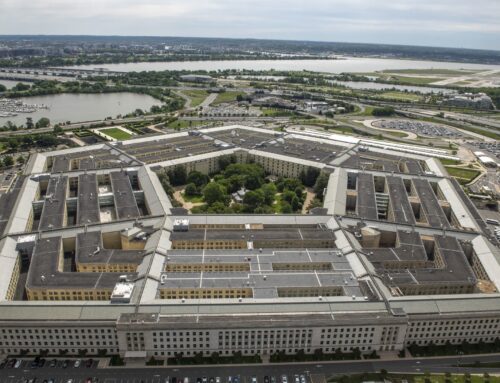Pentagon watchers doubled their caffeine intake this week to get through a $700 billion defense budget request along with the Quadrennial Defense Review, a lengthy report outlining future military priorities. They shouldn’t have bothered: Rather than offering a road map for achieving an effective national defense in the shadow of towering debt and deficits, the QDR leads us down a well-worn path of optimistic and unrealistic defense spending.
The QDR was born in 1997 when Congress directed DOD to review long-term plans for force structure, modernization and other military strategies every four years. Though the original law said the QDR must discuss the budget “required to provide sufficient resources” for the QDR’s goals, it was amended in 2007 to ensure the report was “not constrained to comply with the President’s budget submission.” In other words, it exists in its own fiscal la-la land.
This tinkering reflects a longstanding ideological conflict about the role financial constraints should play in military planning. In 1997, a Republican-majority Congress was engaged in battle with Democratic President Bill Clinton over the post-Cold War defense drawdown. “I think there were some who felt we weren't spending enough on defense,” said DOD Comptroller Robert Hale about the political environment. “They wanted a plan that gave them a sense of requirements without fiscal constraints.” Ten years later, members of that same school of thought worried the QDR process had become too budget-driven and decided to free it from its financial cage.
The result is a document generally dismissed by defense analysts as irrelevant, little more than a government version of a glossy shareholders’ report. The 2010 QDR fails to buck this trend: Though the review disposes with the long-held goal of being able to fight two conventional wars simultaneously, the basic military force structure is left unchanged. In fact, most of the text is devoted to “enhancements” of capabilities such as Special Operations Forces and unmanned aircraft.
Yet few would disagree that miltary planning consists largely of weighing risks against available resources. The QDR admits that “many of these enhancements will be costly” and promises to identify “areas of possible divestment,” but the only tradeoffs referenced are last year’s cuts of weapons such as the F-22 Raptor and this year’s much smaller list of terminations. Important as those cuts were, they’re a drop in the bucket towards the QDR’s goal of “rebalancing” U.S. military goals and resources.
Considering the current economic climate, this is a little like giving someone a risky loan without asking if they have a job. It’s not exactly news that the Defense Department has a planning problem when it comes to money: The Government Accountability Office last year found $300 billion in major weapons cost overruns, and the QDR itself acknowledges that unrealistic cost estimates were a major contributor. They also delay weapons delivery, making bad budgeting dangerous not just to our economy but our national security.
Removing resource constraints from planning exercises like the QDR sets us up to fail. It also deprives the Secretary of Defense of a sharp prod he could use to herd profligate service heads and lawmakers. Future QDRs should explicitly link strategic goals with fiscal projections, even if that means amending the law again. Disconnecting military planning from fiscal realities is not just bad economics—its bad strategy.







Get Social